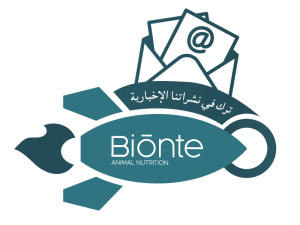Introduction
The poultry industry is greatly affected by the presence of mycotoxins in the feed of both broilers and laying hens, because they are especially susceptible to their effects (Muñoz-Solano et al., 2024).
Some of the most common mycotoxins are directly related to a significant affectation of certain systems. This is the case of ochratoxins, which most frequently cause kidney diseases; zearalenone, which is characterized by its effects on the reproductive tract; and aflatoxins, which generate high liver toxicity (Kalita et al., 2024).
On the other hand, the different effects of these compounds vary depending on various factors, such as concentration, exposure time, the health status of the animal and its age. In addition, it is important to take into account the capacity for synergistic association among the different mycotoxins, which can considerably increase their carcinogenic and immunosuppressive effects, when they are associated (Júnior et al., 2022; Muñoz-Solano et al., 2024).
Aflatoxins
Aflatoxins are considered, along with ochratoxins, one of the most lethal mycotoxins for poultry industry (Gómez-Verduzco et al., 2023). Specifically, aflatoxin B1, is included as a Group 1 carcinogen by the World Health Organization (WHO) (Ruan et al., 2023). It is a group of mycotoxins generated by fungi of the genus Aspergillus and Penicillium, to which ducks are the most susceptible bird (Ruan et al., 2023; Jiang et al., 2024).
This mycotoxin reduces animal performance, as it is associated with a lower feed intake which leads to growth retardation (Ochieng et al., 2021). In laying hens, it leads to lower egg production, as well as a reduction in egg size (Raj et al., 2023).
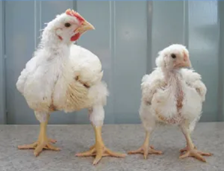
Image 1. Growth retardation
Acute exposure to this substance can cause nausea, vomiting, abdominal pain, convulsion, and other signs of acute liver damage, which can lead to hepatocellular carcinoma (Hernández-Martínez et al., 2023). Thus, aflatoxins mainly cause hepatic damage, thereby altering the fatty metabolism of animals (Seifi et al., 2022).
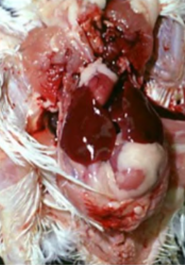
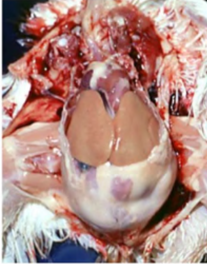
Image 2. Left: healthy animal, right: poisoned animal with liver damage.
Gastrointestinal problems and immunosuppression have been observed in poultry affected by aflatoxins on a continuous basis (Saleemi et al., 2020; Sohrabi et al., 2023). Furthermore, this compound has been linked to losses of effectiveness in vaccination (Rashidi et al., 2020).
On the other hand, aflatoxin B1 is associated with a lower absorption of compounds such as calcium and phosphorus, as well as with the alteration of vitamin D metabolism, effects that aggravate the bone problems of this type of production, in addition to hindering the formation of eggshells (Raj et al., 2023; Paneru et al., 2024). Teratogenic effects have also been observed in poultry exposed to these mycotoxins (Oznurlu et al., 2012).
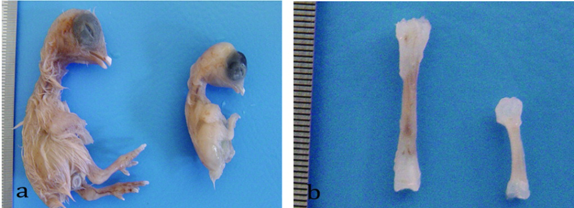
Image 3. Teratogenic effects: growth retardation.
Ochratoxins
Ochratoxins are produced by various fungi of the genus Aspergillus and Penicillium (Ruan et al., 2023). These mycotoxins lead to a decrease in the growth rates of poultry, with low feed efficiency and high mortalities. This is a group of mycotoxins that represents significant economic losses for poultry production, among which ochratoxin A (OTA) stands out as one of the most harmful. They generate significant degenerative changes in kidney and liver epithelia (Awais et al., 2022).
The main effect of OTA is nephrotoxic effect, caused by the accumulation of this compound in the tubular renal cells (Stovcho, 2010; Anzai et al., 2010).
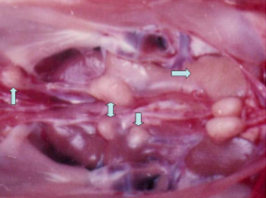
Image 4. Carcinomas in the ureter region of a young male chicken exposed to 0TA for 20 months.
In addition to being nephrotoxic, this mycotoxin has a significant hepatotoxic effect (Ruan et al., 2023). High concentration of ochratoxins in young chickens may increase the excretion of the mycotoxins through the hepatic route. For that reason, in animals
exposed to contaminated feed, have been detected liver lessions (Patil et al., 2017; Stoycho et al., 2010).
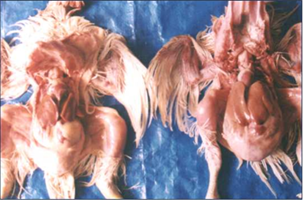
Image 5. Left: healthy animal, right: poisoned animal, pale enlarged liver.
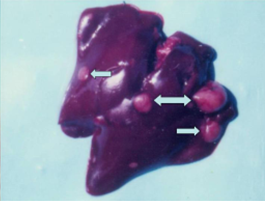
Image 6. Neoplastic lesions in liver.
These compounds lead to a reduction in feed intake and alterations in egg production, decreasing both the quantity produced, and the quality of eggs (Vasiljević et al., 2021). They are characterized by generating significant states of immunosuppression in poultry, even altering the lymphoid system, resulting in a smaller size of organs such as the thymus, spleen or Fabricius bursa (Khan et al., 2019; Awais et al., 2022; Gómez-Verduzco et al., 2023).
Moreover, ochratoxins cause teratogenic effects (Ruan et al., 2023; Zahoor-ul-Hassan et al., 2011). And the loss of effectiveness of some vaccines in animals exposed to them have been reported (Abdelrahman et al., 2022).
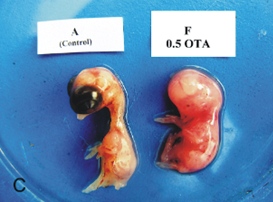
Image 7. Teratogenic effects. Left: healthy animal, right: ophthalmia
T-2 Toxin
Trichothecenes, including T-2 toxin, are generated by fungi of the Fusarium genus, which is part of the type A trichothecenes (Yin et al., 2020). The initial signs caused by this mycotoxin are weight loss, skin and feather changes, diarrhea and coordination problems (Vörösházi et al., 2024).
The presence of T-2 is associated with skin depigmentation of poultry legs of the poultry legs, the presence of cyanotic areas and lost of feather quality (Vörösházi et al., 2024). Dermatological signs, such as inflammation and necrosis have been detected in poultry exposed to feed highly contaminated with trichothecenes (Gómez et al., 2024). This mycotoxin caused necrotic lesions around the beak, the oral cavity and in the pharyngeal mucosa, as well as more internally, in the gizzard (Sandu, 2023; Gjevre, 2013).
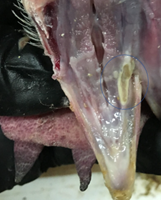
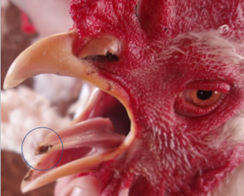
Image 8 and 9. Necrotic lesions in the oral cavity.
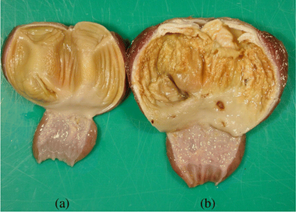
Image 10. Left: gizzard of a healthy animal, right: poisoned animal, thickening of the mucosa and ulceration.
In the case of T-2 mycotoxin, low doses are capable of causing irritation and injuring the intestinal mucosa during ingestion, altering the animal´s microbiota (Vörösházi et al., 2024). Furthermore, it is linked with the production of smaller eggs, and with structural and pigmentation alterations in their shell (Raj et al., 2023). Its consumption leads to a loss in their quality, along with a decrease in the laying rate and alterations in hatching (Sissay et al., 2022). In addition, the production of eggs with a lower content of vitamins, proteins and minerals has been described in hens intoxicated by this mycotoxin (Vörösházi et al., 2024; Puvaca et al., 2024).
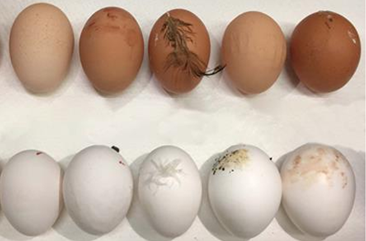
Image 11. Alteration of eggs quality.
As an effect of this mycotoxin, neurological alterations have been observed with signs such as tremors and lack of coordination. It is known that T-2 produces changes in the metabolism of neurotransmitters and damages the blood-brain barrier (Vörösházi et al., 2024).
Deoxynivalenol (DON)
DON is a mycotoxin produced by several fungi of the Fusarium genus, which is classified as trichothecene type B (Ruan et al., 2023). Poultry are less sensitive to DON than other species, however, its effect on gastrointestinal epithelial cells makes it a compound of concern for poultry production, with the small intestine being the site where it has the greatest effect (Azizi et al., 2021).
Its presence is related to growth retardation in broilers. Moreover this mycotoxin is a predisposing factor to necrotic enteritis (Ruhnau et al., 2020; Jia et al., 2023). Its effect on the intestinal barrier, sometimes associated with the presence of fumonisins, means a lower absorption, which leads to an increase in the availability of proteins in the gastrointestinal tract, which serve as stimulants for the growth of Clostridium perfringens (Antonissen et al., 2014).

Image 12. Necrotic enteritis caused by Clostridium perfringens.
Chronic exposure to DON caused immunosuppression in poultry, making them more susceptible to secondary infections that may compromise their health. It leads to lower feed intake by the animals, as well as a decrease in the laying rate (Kulcsár et al., 2023).
On the other hand, cases of diarrhea, anorexia, nausea, vomiting and irritation have been detected in acute exposures (Ochieng et al., 2021). DON is known to have neurotoxic, dermatotoxic and emetic effects, in addition to reducing the effectiveness of some vaccines (Kulcsár et al., 2023).
Fumonisins
Fumonisins cause renal alterations, diarrhea and weight gain losses (Ochieng et al., 2021). Their effect on broilers lead to poor animal performance, weight gain in some of their organs and hepatitis (Kulcsár et al., 2023).
It is a compound analogous to sphingosine, which causes imbalances in sphingolipid synthesis (Kulcsár et al., 2023). Fumonisins accumulate in the liver and generate oxidative stress. Moreover, they cause problems in the absorption of compounds like vitamin D, calcium and phosphorus, which can cause rickets problems (Sokolovic et al., 2022).
Their gastrointestinal effect and immunosuppressive capacity, together with those of DON, are considered predisposing factor to one of the most important diseases in broiler industry today, Bacterial chondronecrosis with osteomyelitis lameness (BCO). This syndrome triggers lesions such as necrosis of the femoral head, osteomyelitis or tibial dyschondroplasia, which cause lameness in poultry (Shanmugasundaram et al., 2022; Alharbi et al., 2024).
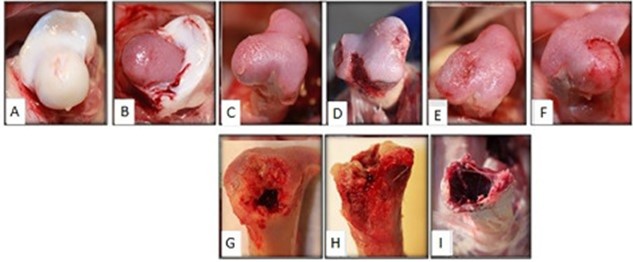
Image 13.Progression of BCO femoral injuries.

Image 14.Progression of BCO tibial injuries.
Zearalenone
Zearalenone is a mycotoxin produced by fungi of Fusarium genus, which mainly affects the reproductive system, due to its estrogenic nature (El-Sayed et al., 2022). It produces hormonal imbalance, causes abortions, fetal deaths and has teratogenic effects (Ochieng et al., 2021; Wu et al., 2021).
In laying hens exposed to this mycotoxin a reduction in the laying rate has been observed (Sifan et al., 2022). Studies have shown that adult female turkeys fed 100 mg/kg of zearalenone have reduced their egg production by 20% (Wu et al., 2021). This mycotoxin can cause lesions in the reproductive tract such as prolapses (Dinev, 2021).
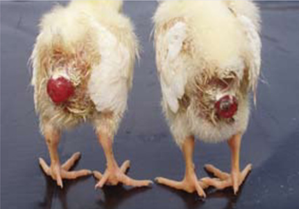
Image 15. Prolapses in poultry.
On the other hand, a detrimental effect of this mycotoxin has also been observed in adult males, in which a reduction in the amount of sperm has been detected, in addition to greater precocity. Exposure to doses of 800 mg/kg has shown a reduction in the size of the crest and testicles of some males (Zoila et al., 2019; Wu et al., 2021).
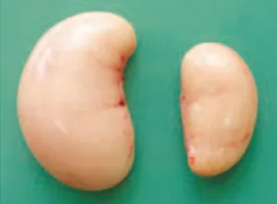
Image 16. Left: healthy bird testicle, right: testicular atrophy.
Cases of achondroplasia and performance losses caused by this mycotoxin have been detected in broiler chickens (Sifan et al., 2022). It also has a hepatotoxic and nephrotoxic effect, in addition to generating immunosuppressive states in animals (Wu et al., 2021).
Conclusion
Mycotoxins are capable of causing major health problems in poultry as well as significant economic losses in the poultry industry worldwide. For that reason, we should be aware of the importance of these substances and act accordingly through prevention and control strategies.

